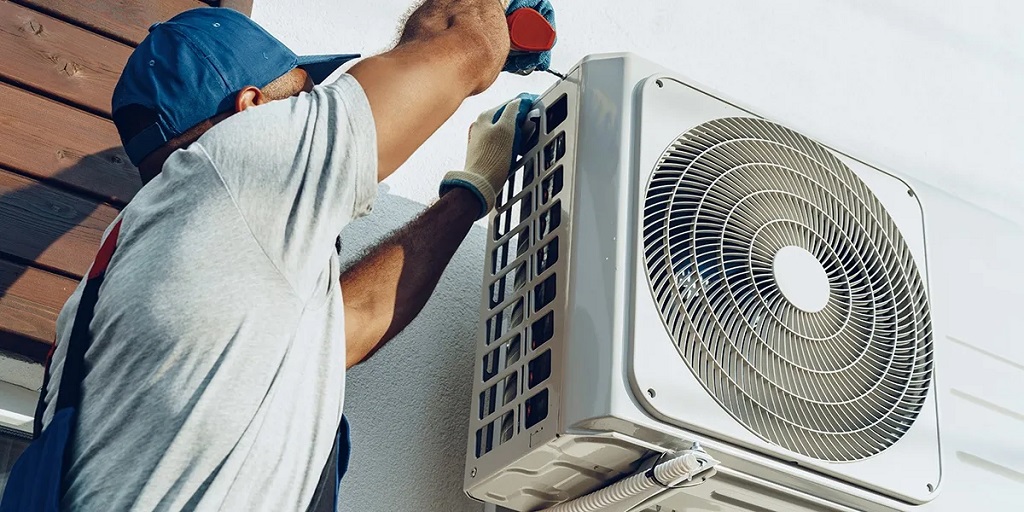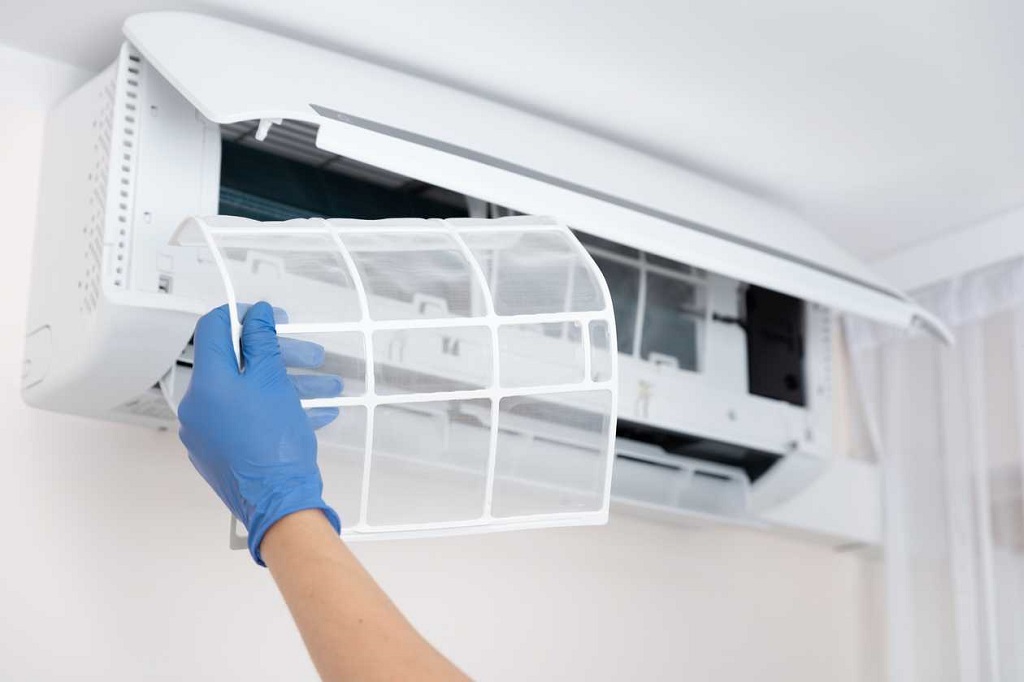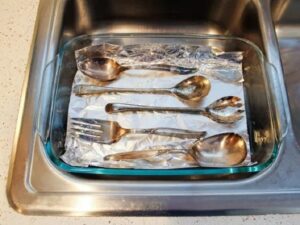
Ah, the air conditioner. Our summer savior, quietly humming away in the background, keeping us cool and comfortable. But what about the hidden hero of the AC unit – the condenser coil? This vital component works tirelessly to dissipate heat, ensuring your AC runs efficiently. However, condenser coils, like all hardworking heroes, can get dirty and grimy over time. This grime buildup acts like a blanket, preventing the coil from releasing heat effectively, leading to higher energy bills, reduced cooling capacity, and potential breakdowns.
The good news? You don’t have to be a professional to tackle this cleaning project! With a little know-how and some elbow grease, you can clean your AC condenser coils yourself and keep your air conditioner running smoothly all summer long.
Understanding the AC Condenser Coil: Location and Function
The condenser coil is typically located outdoors, on the side or back of your house, near the fan unit. It’s made up of a series of thin metal fins that look like a radiator. Here’s how it works:
- Hot Refrigerant: Inside your AC unit, refrigerant absorbs heat from the air circulating inside your home. This heated refrigerant is then pumped outside to the condenser coil.
- Heat Exchange: As the hot refrigerant travels through the condenser coil, the outdoor fan blows air over the fins. This airflow helps transfer heat from the refrigerant to the outside air.
- Cooled Refrigerant: The cooled refrigerant then travels back inside the house, ready to absorb more heat and complete the cooling cycle.
The Grimy Threat: How Dirt Affects Condenser Coil Performance
Condenser coils are constantly exposed to the elements. Dust, dirt, pollen, leaves, and other debris can accumulate on the fins, reducing airflow and hindering heat transfer. Imagine trying to cool down with a blanket wrapped around you – that’s essentially what happens to your AC unit when the condenser coils are clogged.
Signs Your Condenser Coils Need Cleaning:
Here are some telltale signs that your condenser coils might be harboring a hidden layer of grime:
- Increased Electricity Bills: A dirty condenser coil forces your AC unit to work harder to maintain the desired temperature, leading to higher energy consumption.
- Reduced Cooling Capacity: If your home isn’t feeling as cool as it should, even with the thermostat set low, dirty condenser coils could be the culprit.
- Frequent Cycling: A dirty condenser coil may cause your AC unit to short cycle, turning on and off more frequently than usual. This can put additional strain on the system and reduce its lifespan.
- Visible Dirt Buildup: Take a peek at your condenser coil. If you see a visible layer of dirt, dust, or debris covering the fins, it’s time for a cleaning.
Safety First: Preparing for the Cleaning Project
Before tackling the cleaning project, ensure safety is your top priority:
- Turn Off the AC Unit: Always turn off the power to your AC unit at the breaker box before starting any cleaning or maintenance work.
- Clear the Area: Remove any furniture, plants, or debris from around the condenser unit to allow for proper access and cleaning.
- Protect Yourself: Wear gloves and safety glasses to protect your eyes and hands from dust, debris, and potential contact with sharp condenser fins.
Cleaning Your Condenser Coils: A Step-by-Step Guide
Now that you’re prepped and ready, let’s dive into the cleaning process:
-
Vacuuming Power: Use a soft brush attachment on your vacuum cleaner to gently remove loose dirt, dust, and debris from the condenser fins. Start from the top and work your way down, ensuring you reach all areas of the coil.
-
Watering Woes? (Optional): If your vacuum cleaner doesn’t have enough power to remove the grime, you can carefully use a garden hose with a gentle spray setting to rinse the condenser coil fins. Caution: Avoid using a high-pressure stream, as this can bend the delicate fins. Always spray from the inside out, allowing the dirt and debris to flow away from the unit.
-
Cleaning Solution Savvy (Optional): For stubborn grime, consider using a commercially available AC coil cleaner. Follow the manufacturer’s instructions carefully, typically involving spraying the coil cleaner on the fins, letting it dwell for a specific time, and then rinsing thoroughly with a gentle water spray.
-
Fin Fixer (Optional): If the condenser fins are bent, you can carefully use a fin comb (available at hardware stores) to straighten them. Be very gentle, as further bending can damage the fins and hinder
-
Fin Fixer (Optional): If the condenser fins are bent, you can carefully use a fin comb (available at hardware stores) to straighten them. Be very gentle, as further bending can damage the fins and hinder heat transfer.
-
Drying Time: After cleaning, allow the condenser coil to air dry completely before turning the AC unit back on.
Cleaning Frequency:
The frequency of cleaning your condenser coils depends on your environment. If you live in a dusty area or have a lot of trees around your house, you might need to clean them more often, perhaps every 2-3 months during peak cooling season. For most homeowners, an annual cleaning in the spring before the summer heat arrives is sufficient.
Bonus Tip: Consider Professional Cleaning for Neglected Coils
If your condenser coils haven’t been cleaned in a long time and are caked with grime, tackling the cleaning yourself might be challenging. In such cases, consider hiring a professional HVAC technician for a thorough cleaning and inspection. They have specialized tools and expertise to ensure a deep clean and optimal performance of your AC unit.

Keeping Your AC Running Cool: Beyond Cleaning
Cleaning your condenser coils is an important part of AC maintenance, but it’s not the only step. Here are some additional tips to keep your AC running smoothly:
- Change Air Filters Regularly: Dirty air filters restrict airflow and reduce cooling efficiency. Replace air filters according to the manufacturer’s recommendations, typically every 1-3 months.
- Schedule Regular Maintenance: Having your AC unit inspected and serviced by a qualified technician annually can help identify potential problems before they become major issues.
- Keep the Area Clear: Ensure there are at least 2-3 feet of clearance around the condenser unit to allow for proper airflow. Trim any overgrown vegetation that might be blocking air circulation.
Related: How to Clean Aluminum Window Frames?
Conclusion: A Clean Condenser Coil, a Cool Summer
By taking the time to clean your condenser coils and implement these maintenance practices, you can ensure your AC unit operates efficiently, keeps your home comfortable throughout the summer months, and potentially extends the lifespan of your valuable cooling system. So, grab your gloves, gather your supplies, and get ready to tackle this DIY project for a cooler, more cost-effective summer season!





